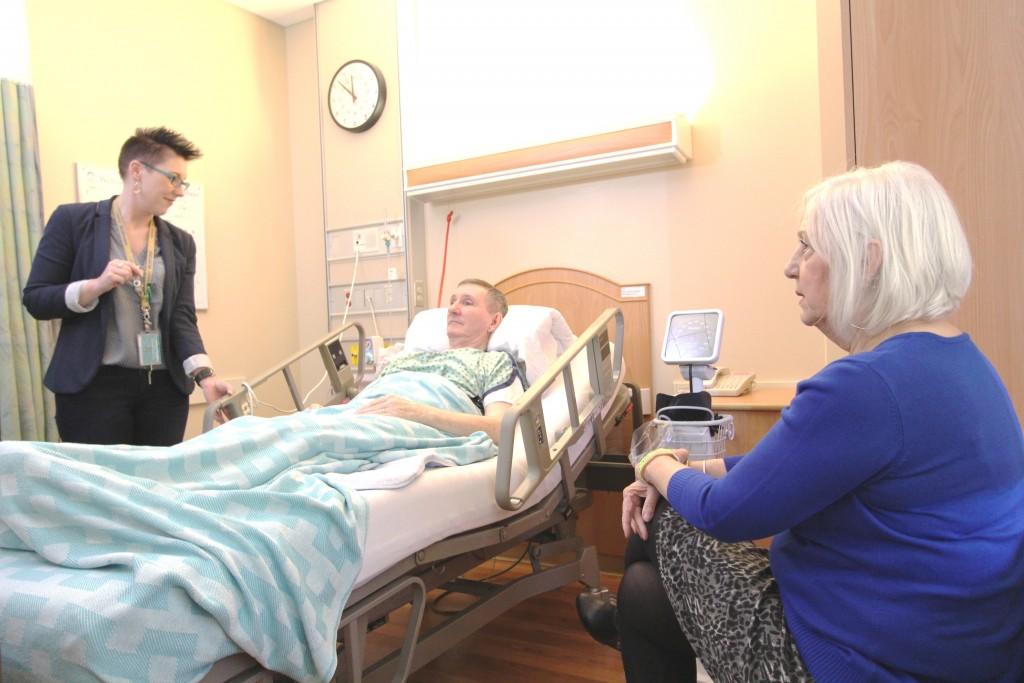Leaders Provide a Personal Level of Care to Improve the Patient Experience
by Maryanne Matthews
 Leaders provide a personal level of care to improve the patient experience
Leaders provide a personal level of care to improve the patient experiencePatients and families of Thunder Bay Regional Health Sciences Centre should always expect high quality care and experiences. Our patient care leaders “round” on patients to help meet those expectations.
“Leader rounding on patients” has been adopted as a best practice tactic. It involves nursing leaders regularly checking in with each patient on their unit. It helps reconnect leaders to patient care on a personal level. It also enables leaders to identify and respond to potential gaps in care in real time, and to recognize good clinical practice.
“Leader rounding on patients helps ensure that the absolute best level of care is provided to every patient, every time,” said Ron Turner, Senior Director of Patient Services. “By personally interacting with patients and families, our leaders are able to address the patients’ expectations and assist in the effectiveness of their treatment. It’s also a great opportunity for leaders to connect with the patient and their family to address questions and manage potential anxiety. Sharing information about the unit, our staff, training and experiences all help to put a patient’s mind at ease.”
Leader rounding is one of the many ways our Hospital is working to enhance the quality of the patient experience, a priority identified within the Strategic Plan 2020. It allows us to identify further opportunities to improve quality care that is: safe, effective, patient and family centred, timely and accessible, equitable, and efficient.
“Creating a quality patient experience builds upon our Patient and Family Centred Care philosophy. Our patients and their families are more connected to our Hospital, and our leaders are always reevaluating our care, care processes and overall quality experiences,” said Turner.
After rounding on patients, leaders provide feedback to staff to recognize practices that patients identify as making a positive difference, and support behaviors patients have identified as important to them.
“This practice reflects our commitment to being respectful and responsive to the needs and values of our patients and their families,” said Turner. “We listen to their questions, concerns and values, and use that feedback to guide our decisions and practices moving forward so that the experiences of our patients are positive.”